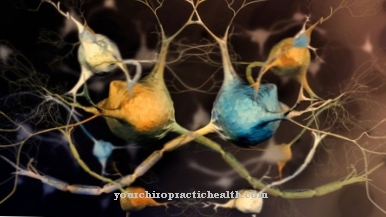As Sensory integration the interaction of different sensory systems or sensory qualities is called.
What is sensory integration?

Sensory integration (SI) refers to the ordering of sensory impressions on the one hand and a therapeutic concept developed by the psychologist and occupational therapist Dr. A. Jean Ayres was developed in the 60s and 70s. She found out that there are children who suffer from a disorder, but in which no damage can be proven.
Sensory integration is a process that takes place everywhere in the brain. These include, for example, seeing, hearing, tasting, smelling, movement and body awareness.
How the body processes these stimuli is individually different and depends on the quality of the sensory systems. Sensory integration is the basis for learning, speaking and acting. The information that is received through the sensory systems is processed in the brain and then implemented in appropriate actions.
Sensory integration begins during pregnancy and develops very quickly, especially in early childhood. This is extremely important because in the first few years the sensory systems are networked and the basis for language, ability to act, social behavior, coordinated movement and imagination is developed.
Function & task
The sensory information of the near senses plays a very important role, especially in the first years of life. The local senses provide the brain with information about the body and what position it occupies in the environment. A distinction is made between:
- Sense of touch or touch (tactile sense)
- Sense of balance (vestibular sense)
- Sense of movement and strength (proprioceptive sense)
If a child is able to process the different sensorimotor experiences very well in the first years of life, it can develop a differentiated picture of the body's limits and possibilities. This image is also known as the body diagram. If sensory information can be organized and put together in the brain, this process is called "sensory integration".
A good sensory integration is necessary in order to be able to orientate oneself in the environment. For this, all information from the environment or from the body must be processed. This information is then picked up by the receptors located in the sense organs. These include:
- the tactile bodies of the skin, which are important for touch
- the semicircular canals in the middle ear for balance and gravity stimuli
- Receptors in the joints and muscle spindles for information on the range of motion
The nerve tracts then forward the information to different brain centers, most of which are processed unconsciously and automatically. Important processes take place in the brain stem, the lowest part of the brain. Here, for example, balance stimuli are processed so that adaptation to changes in position is possible automatically. The unconscious processing is important as we need our attention for higher performance.
You can find your medication here
➔ Medicines for eye infectionsIllnesses & ailments
If the interplay of the sensory modalities is disturbed, sensory integration disorders occur. A sensory integration disorder is understood to be a mild neurological dysfunction in which sensory information cannot be processed sufficiently. As a result, humans cannot adapt their behavior to the requirements and react less purposefully and sensibly.
The characteristics are very different. For example, the basic tension of the muscles can be hypotonic, i.e. too low, so that those affected have to make a conscious effort to maintain postural stability. However, the necessary attention for other activities is no longer available. Children who suffer from it appear very limp and restless. Other children, on the other hand, cannot plan their movements purposefully and are therefore extremely clumsy.
Another disorder manifests itself in vestibular hypersensitivity, which is also known as a modulation disorder. In this case, it is not possible for the child to inhibit or filter stimuli. If the child is tactilely defensive, it avoids unexpected contact with people or materials that have a diffuse stimulus quality. The children react defensively and aggressively to such contact. Therefore, situations such as subway rides or queues are avoided, which can also lead to social anxiety. Vestibular defensiveness is an extreme form of fear of heights that is triggered by activities such as cycling or swinging. Children who suffer from sensory integration disorder often show the following symptoms:
In infancy:
- Defense or irritated behavior when touched
- Defensive or irritated behavior to changes in the situation
- Restlessness and screaming attacks and very little activity
- Swallowing and sucking problems
- Disorders of the sleep-wake cycle
In toddler or school age:
- Sensitivity to noise
- lack of body or self-awareness
- "clumsy" children
- delayed motor development
- delayed language development
- Stress and behavior problems
- Hypo- or hyperactivity
- Learning or partial performance disorders
Sensory integration disorders are the result of various processes. For example, they can occur due to a lack of developmental stimuli. Moving and actively playing are therefore extremely important for development. Otherwise, children have little opportunity for sensory experiences and experience little physical contact.
But over-stimulation through stimuli can also cause a disorder. As a result, the processing processes disintegrate and the stimuli are only partially transmitted. Adults can also suffer from a sensory integration disorder, usually they already had problems with perception as children or they were not challenged and encouraged enough.



.jpg)























